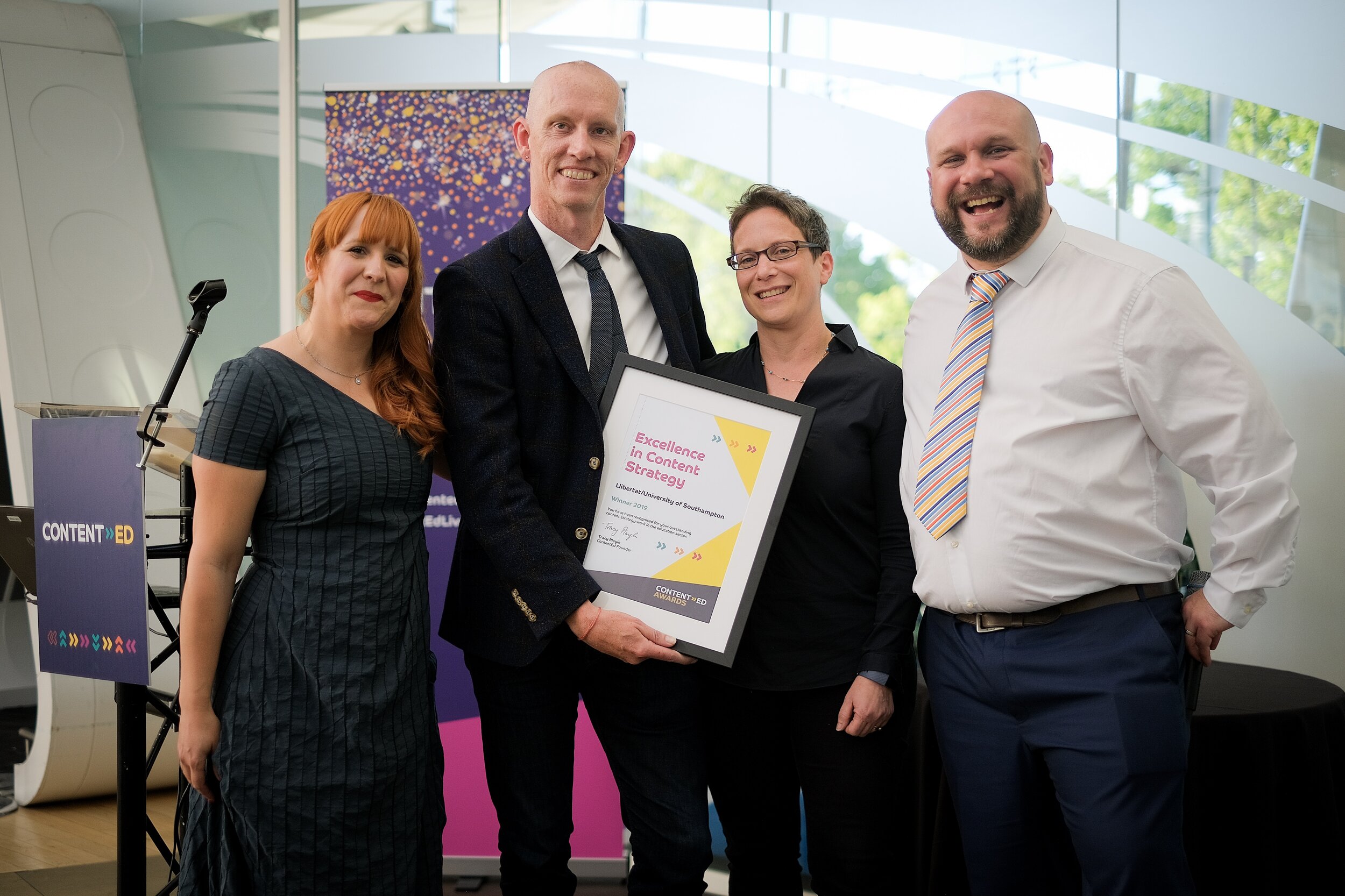Five things I learnt at my first ContentEd
Our newest Pickle, Simon, joined us just in time to attend our annual conference for those working in content strategy in the education sector. So for his first time on the Pickle Jar Communications blog, he’s rounded up some of his thoughts on the conference and what he’s going to take from it.
ContentEd left me feeling very content indeed.
It was my first ever ContentEd, occurring just days before I joined the Pickle Jar team as a Senior Content Strategist. There was no better way to start my new role.
Dynamic Earth rolled out the red carpet for the loveliest community of content strategists, content designers and digital communicators that the worldwide education sector has to offer.
I went home with a wealth of new colleagues, a bouquet of snazzy business cards, and a head full of knowledge.
Here are the top 5 things I learnt at ContentEd 2019.
1. You need two desks
Author Austin Kleon recommended having two desks: a desk for digital activity (laptop, phone, printer) and a desk for analogue activity (sketchpad, crayons, paint).
Austin quoted American cartoonist Lynda Barry: “In the digital age, don’t forget to use your digits.” He explained that if your creativity dries up at the laptop, then step over to your analogue desk and have a play. It is a great way to reignite your creative spark.
Side note: Austin is famous for founding the Newspaper Blackout movement, in which poetry and short stories are created by redacting newspaper articles with a permanent market. I attempted this myself using a Pickle Jar flyer!
2. Ask for permission, not forgiveness
I was lucky enough to chair a talk on content collaboration hosted by Kezia Falconer and Tasha Quinn from the University of Glasgow. My luck was two-fold: the hosts provided free donuts and valuable advice on content collaboration.
My favourite piece of advice was a reverse of the usual adage about diving in without asking for permission. Instead, Kezia recommended a more courteous approach when collaborating with colleagues: “Ask for permission, not forgiveness.”
By keeping colleagues in the loop, seeking their expertise, you can produce higher quality work with greater reach. Kezia and Tasha’s social media output is proof of this approach, particularly their No Wrong Path campaign about Glasgow student, Jamie Dalgoutte, who experienced 15 foster homes during his childhood.
3. Celebrate the little wins
Ayala Gordon from the University of Southampton explained that content design is an ongoing mission because university websites are vast, and technology is ever-evolving. Our work is never done. One ominous slide declared: “There is no other side.”
Ayala recommended celebrating the little wins along the way. One less-ominous slide showed a website-themed cake to thank her content team at the start of the university’s OneWeb Festival.
The journey towards a better website can still be exciting, even if we never arrive at the final destination.
4. Yes, we kanban!
Padma Gillen taught me about the Japanese concept of Kanban, which is greatly beneficial for managing content projects.
Kanban helps a team keep their focus on workflow by encouraging them to produce a visual representation of workflow on a whiteboard (or Trello board).
This visual representation is often a series of columns containing a card for each project: the first column being Backlog, the second being New, and the final column being Complete. Additional columns can be added between the New and Complete columns, such as In Progress or Testing.
Project cards keep moving to the right, from one column to the next, as long as work is being completed!
Padma also recommended having an “Icebox column” for wish-list projects, to ensure long-standing issues are being addressed.
5. Think small
Sarah Richards explained that a sign of good content design is short, simple sentences to help the reader digest the information. Traditionally, it is recommended that sentences are no longer than 14 words, but why not go smaller?
Sarah also challenged the assumption that using simple words can result in boring content. She cited a series of strong advertising campaigns comprised solely of short, high-frequency words, such as Just Do It (Nike) and Think Small (VW Beetle). Less is more.
I could go on…
My learning extended far beyond the five points above, such was the generous range of speakers and insight on offer. For instance, did you know that woodlice are known as cheesy bobs in Guildford?
I am already excited about attending next year’s event. Roll on ContentEd 2020.
Won’t you join me?
If you need help with advancing content strategy within your institution, get in touch with us.







